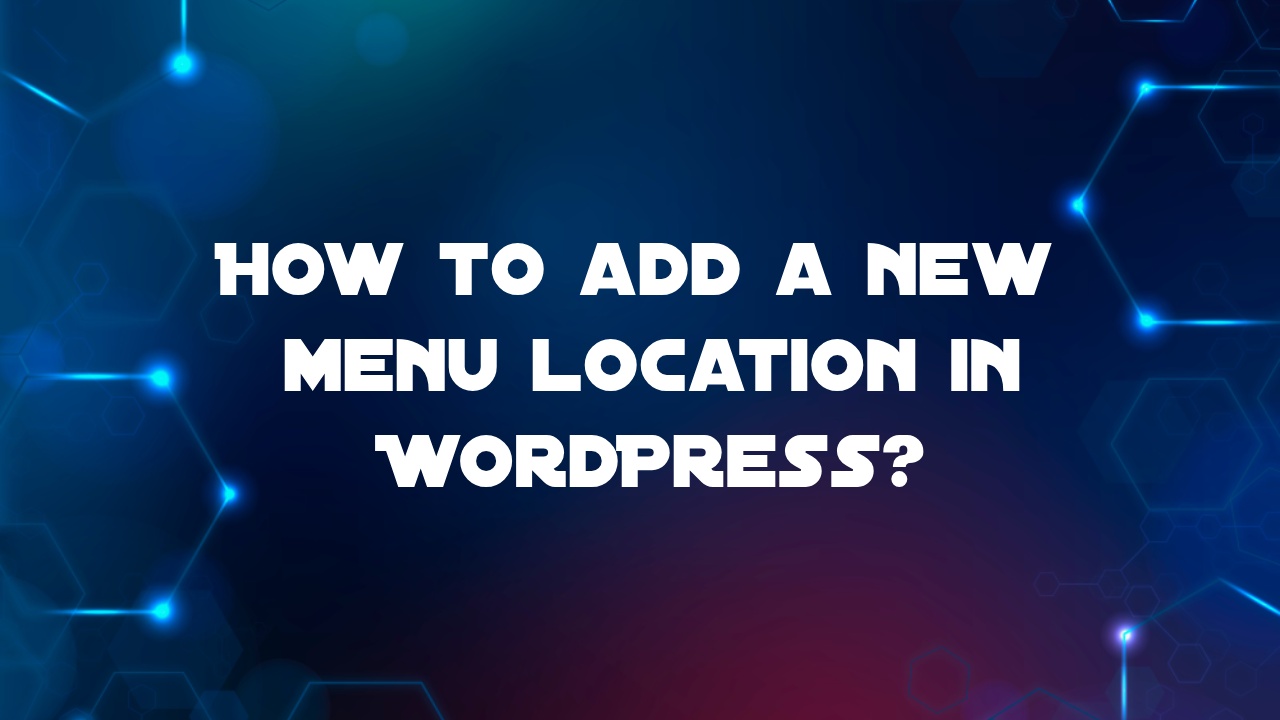If you’re looking to enhance the navigation of your WordPress website, adding new menu locations can significantly improve the user experience. Custom menus give you the freedom to organize and display your content exactly how you want. In this guide, we’ll walk you through the process of adding a new menu location in WordPress, complete with coding examples.
WordPress offers a powerful system for managing menus, allowing you to create multiple menu locations and customize their content. By adding a new menu location, you can provide users with quick access to important sections of your website.
Why Add a New Menu Location?
The default menu locations in WordPress might not always align with your website’s structure and design. By adding a new menu location, you can tailor your navigation to match your site’s unique needs. Whether it’s a header, footer, sidebar, or any other area, you have the flexibility to create the perfect menu to guide your visitors.
Step-by-Step Guide to add a new menu location in WordPress.
Creating a New Menu Location
- Log in to your WordPress admin panel.
- Navigate to “Appearance” > “Menus.”
- Click on “Manage Locations” or a similar option depending on your theme.
- Choose a location where you want to add the new menu, such as “Header” or “Footer.”
- Click the “Create a New Menu” link and give your menu a name.
- Save your new menu.
Adding Code to Your Theme’s Functions.php
- From the WordPress dashboard, go to “Appearance” > “Theme Editor.”
- Locate the “functions.php” file on the right-hand side.
- Insert the following code to register your new menu location:
function custom_theme_menus() {
register_nav_menus(
array(
'new-menu-location' => __( 'New Menu Location' ),
)
);
}
add_action( 'init', 'custom_theme_menus' );- Save your changes.
Displaying the New Menu on Your Website
- Return to the “Appearance” > “Menus” section.
- Select your newly created menu from the “Menu” dropdown.
- Add pages, custom links, or categories to your menu.
- Assign the menu to the desired location (e.g., “Header” or “Footer”).
- Save the menu.
Tips for Effective Navigation
- Keep menu names concise and descriptive.
- Organize menu items logically to enhance user experience.
- Use clear and intuitive labels for menu items.
- Test your menus across different devices to ensure responsiveness.
FAQs
A menu location is a predefined area on your WordPress website where you can display a custom menu. It allows you to control the placement of navigation menus.
Yes, you can assign multiple menus to the same menu location. WordPress will typically display them as a dropdown or a list of options.
While you can create menus without coding, adding new menu locations may require some basic understanding of PHP and WordPress theme structure.
You can style your custom menu using CSS. Identify the menu’s class or ID in the HTML markup and apply styling rules in your theme’s stylesheet.
Ensure that you’ve assigned the menu to the correct location and that your theme supports custom menus. If the issue persists, double-check your code for errors.
Conclusion
Adding a new menu location in WordPress is a straightforward process that enhances your website’s navigation and usability. By following these steps and utilizing the provided coding examples, you’ll be able to create and customize menus to best suit your website’s needs.


